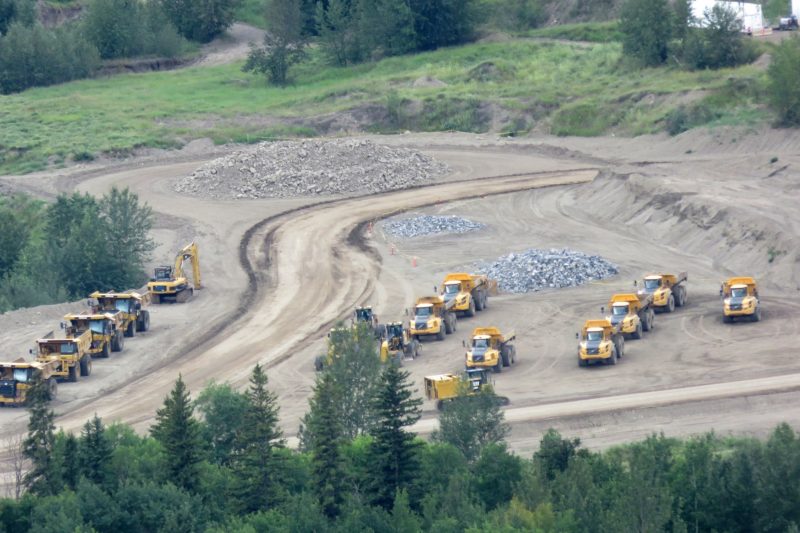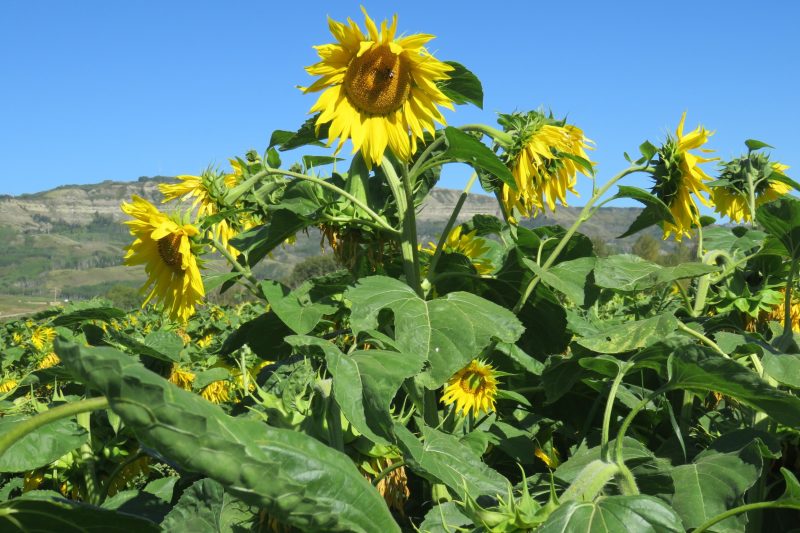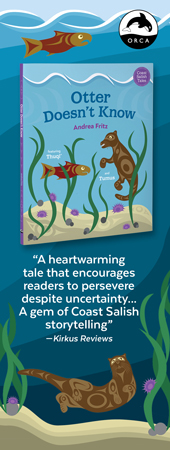Ormsby #85: Site C will flood Eden
BC Hydro’s proposed dam called Site C will officially cost $8 billion, but probably much more, and will flood about 4,000 hectares of class 1 to 5 agricultural land.
February 12th, 2017

Critics of Site C say a 93-square-kilometre artificial lake will drown the best topsoil in northern B.C.
Mark Eliesen, former CEO of BC Hydro, considers the Site C dam a “white elephant” that will mire Hydro so deeply in debt that Hydro might have to be sold.
REVIEW: The Peace in Peril: The Real Cost of the Site C Dam
by Christopher Pollon (text) and Ben Nelms (photos)
Madeira Park: Harbour Publishing, 2016.
$24.95 / 978-1-55017-780-0
Reviewed by John Gellard
[Website cover image: A view of the valley between Bear Flat and Halfway River on a misty day in July of 2016. John Gellard photo.]
*
The 100 kilometres of the Peace River Valley between Hudson’s Hope and Fort St John has rich alluvial soil. Blessed with a relatively benign microclimate, it contains excellent farmland and is an invaluable wildlife habitat. For northern British Columbia, it’s as close to the Garden of Eden as you can get.
But BC Hydro has its way, a 60-metre-high wall of compacted earth will stretch more than a kilometre across the main stem of the Peace River–and the garden will be underwater.
BC Hydro’s Site C Dam, under construction on the Peace River near Fort St John, threatens to end this fertile and little-known oasis. Hydro and the government it represents see the Peace River Valley as a commodity to be destroyed, as farmland to be blithely inundated. They are fixated on a new opportunity to expand transmission lines feeding into provincial electrical grids.
 Government and capital seem to have decreed that the Peace River Valley’s highest and best use is to be flooded and turned into a series of dams and sterile reservoirs with unstable banks awash with a generation’s worth of waterlogged forest debris. They see only short-term opportunities: a make-work project for transient politicians and for engineers whose very careers depend on the continuous damming of natural rivers.
Government and capital seem to have decreed that the Peace River Valley’s highest and best use is to be flooded and turned into a series of dams and sterile reservoirs with unstable banks awash with a generation’s worth of waterlogged forest debris. They see only short-term opportunities: a make-work project for transient politicians and for engineers whose very careers depend on the continuous damming of natural rivers.
To this end, premier Christy Clark has vowed that construction of the Site C Dam must be pushed past the “point of no return” before the election in May 2017.
Christopher Pollon and Ben Nelms, author and photographer of The Peace in Peril, canoed down the river in 2015, camping on some of the fifty wild wooded islands where moose, caribou, deer, and elk migrate and calve in relative safety from bears, cougars and wolves. They got to know farmers facing the loss of their third-generation family farms and First Nations people who might lose their homes and their three hundred-generation hunting and gathering grounds.
Ken and Arlene Boon own one of the homesteads that stand in the way of the new highway to the dam site. “The road goes right through our home,” says Arlene, whose grandfather once resisted eviction in that very spot. BC Hydro needs them to vacate immediately, though they will be allowed to rent back some of their land and farm it for a few years.
The Boon family farm looking south to pasture and grain field land to the Peace River, July, 2016. John Gellard photo.
The Boon farm is a classic example of what can be done in this gentle microclimate. Ken and Arlene Boon grow alfalfa and huge sunflowers on the flood plain and lease seven acres to Mike Van Zandwyk, who grows vegetables for the local market in Fort St. John. On a higher bench, the Boons grow oats and barley, and on the slopes below the boreal forest, they graze cattle.
Pollon and Nelms are careful to give a fair hearing to people who favour the Site C Dam. One of them, Vic Gouldie, is a trapper who worked for decades on dam projects. He stands to lose half his trap-line, but he has picked a spot to build himself a lakeside cabin once the reservoir is in place. He congratulates himself on his foresight. “Now that’s positive thinking!” he remarks.
Vic pokes fun at the “Paddle for the Peace,” an annual gathering that attracts thousands in early July. “These fucking idiots who come up here to save the Peace. They have a big rally and a weenie roast” (mock crying) “Oh, we shouldn’t. It will be gone forever.”
Vic’s dream of creating an “Okanagan of the North” seems a bit delusional, but Pollon treats his dream with respect — or at least neutrality.
A few young guys, also newcomers, feature in The Peace in Peril. Two are cruising timber for the upcoming clear-cutting. “There’s years of work here,” one of them enthuses. Another young fisherman on a weekend visit from the oil patch says, “The money’s amazing and it [the reservoir] might make the fishing better.”
These newcomers express a persistent delusional dream of lakeside living, with a blissful unawareness that the soft banks of the reservoir will slough for decades, just like huge Williston Lake upstream behind the Bennett Dam, which has prevented any significant use of the “lakeside.”
Damming is an industry of devastation. You can’t wave a magic wand to create a bucolic picture-perfect cottage country. And you don’t know what you’ve got till it’s gone.
Besides, rotting soil and vegetation in the reservoir will convert inorganic mercury to methyl mercury, which will poison the water and the fish.
Generally, Pollon conveys the impression that the dam is an abomination. He quotes a range of considered and expert opinion that agrees that it’s a bad idea. Harry Swain, past chairman of the Joint Review Panel, asserts that we don’t need the power and we’ll end up selling it at a loss.
Mark Eliesen, former CEO of BC Hydro, considers the Site C dam a “white elephant” that will mire Hydro so deeply in debt that Hydro itself might have to be sold off.
Agronomist Wendy Holm has a different objection. She argues that the land is too valuable to be sacrificed to a sterile megaproject and the industry it represents. The Peace Valley could produce enough fresh vegetables to feed a million people, not to mention grain and beef.
Holm is not alone. With plain common sense Mike Van Zandwyk, Bear Flat vegetable farmer, contends that, “With Site C, the jobs and the money will come and go. Then what? If more people farmed here, we would build the jobs without Site C.”

Beth, Mike Van Zandwyk’s partner, selling their Bear Flat vegetables at the Fort St. John market, August 2016. John Gellard photo.
Pollon also points to an apparent “scorched earth policy” on the government’s part: a twisted and deceitful logic that if you destroy enough of the ecology soon enough, there will be nothing left worth saving.
Such an ulterior motive is hard to prove; but as I write, the feller-bunchers are getting ready to clear cut the Watson Slough, breeding ground for 116 songbird species and sixty waterfowl species.
Pollon’s writing style is an engaging combination of facts and figures, history, adventure, and human interest; Nelms’s photographs are vivid and informative; the book’s production values are high.
Far from expert canoeists, Pollon and Nelms get into a few scrapes. They beach their rented canoe on a rocky shore in the dead of night only to awake in the morning to find themselves high and dry because of water level fluctuations from the Bennett Dam. They get chased by a Search & Rescue helicopter, having been reported missing because they forgot to call home.
Their escapades add excitement to the narrative — and their hair-raising misadventures remind us that this part of the Peace is still off the beaten track.
A pleasing coffee table book and a timely call to action, The Peace in Peril is also an excellent primer not only to what is left of the Peace River Valley, but also to the unstoppable march of capital and the willingness of the present provincial government to squander the miniscule percentage of British Columbia that is cultivable and productive for agriculture.
*
John Gellard spent his childhood in England and Trinidad, donated his adolescence to an English boarding school, earned an MA in Philosophy from the University of Western Ontario, and taught English in London, Ontario, for seven years. In 1973, he arrived in the West Kootenay where he felled and peeled pine logs on his “wild land” property and built a log cabin. Gravitating to the city, he taught drama for seven years at Vancouver Technical Secondary School. He still helps run writing workshops for students, notably (since 1993) an annual overnight retreat on Gambier Island. His articles have appeared in the Globe and Mail and the Watershed Sentinel. He takes an active interest in environmental issues and travels extensively in B.C. He lives among friends in Kitsilano and on Hornby Island, has two grown sons, and retired from teaching at Kitsilano Secondary School after being named Canada’s “Best High School Teacher” in a Maclean’s poll in August 2005.
*
The Ormsby Review. More Readers. More Reviews. More Often.
Reviews Editor: Richard Mackie
Reviews Publisher: Alan Twigg
The Ormsby Review is hosted by Simon Fraser University.
—
BC BookWorld
ABCBookWorld
BCBookLook
BC BookAwards
The Literary Map of B.C.
The Ormsby Review







Excellent review. You take hold of details that I glossed over. I too was somewhat horrified by the concluding sentence of the book, but I ignored it because there was enough in the book to convey the idea that the dam is an abomination. I dwelled more on the interesting people we meet in the book. I had met some of them in the flesh on my visit to the Peace and thought they deserved recognition. But yes, well done. Thanks.
I had a slightly different take on this visually beautiful book.
The Peace in Peril: the real cost of the Site C dam
by Christopher Pollen and Ben Nelms
Review by Adrienne Peacock
Jan. 20, 2017
There is much to like about this book; the photographs are beautiful, with an excellent map at the beginning and the prose is lively, engaging and easy to read.
Drifting down the Peace River in a canoe is a wonderful experience, and the author captures the joys of paddling this magnificent river in evocative language.
The introduction begins with the sight of a dead moose in the back of a truck. The author recites the statistic that 20 percent of BC’s entire moose kill takes place in the Peace. He doesn’t mention that flooding this “valley of ghosts” will decimate ungulate populations. Nor does he mention that the first dam on the Peace River destroyed the habitat of an estimated 8000-12000 moose.
The introduction is entitled “Valley of Ghosts”. I thought “valley of ghosts” would refer to the long history of human civilization in the valley; but no, the author seems to assume the Site C dam is a done deal, and sadly, that view permeates the book, even as he compiles compelling evidence against it.
I was also disappointed to see that by the end of the introduction, Pollen had decided that it’s a story about “the trade-offs our society collectively makes to live in comfort”.
No, this is a story about a make-work project paid for by the public so that a politician with no respect for data, and who embraces old technology earth-fill dams as the future of energy supply, can claim she has created jobs, which she believes she needs to get re-elected.
As Dr. Harry Swain, former chair of the Joint Review Panel and the only independent examiner of this project, has said, “You don’t even have to think very much about the environmental and aboriginal cost of Site C because the economics is so awful”, and “With no domestic need for the electricity from Site C, the province has been pivoting from one illusory source of new demand to another”. So much for Pollen’s comment that Site C represents the “the trade-offs our society collectively makes to live in comfort”.
The story line revolves around a canoe/camping trip from Hudson’s Hope to Taylor by two inexperienced canoeists. There is an amusing incident at the end where a failure to connect with a family member results in a Search and Rescue operation. Pollen then interviews many of the locals, including the critics, to good effect; although one of the key players, Mayor of Hudson’s Hope Gwen Johansson, gets only a photo of her front gate.
There is much to learn about the natural history of the Peace River waters in Pollen’s chapters under the heading Water, and he has interesting facts about the geology and abundant wildlife in the valley, as well as some history of region, Treaty 8 and white settlers. This is a river valley with tremendous historical significance.
However, the tidbits from American journalist Blaine Hardins’ Life and Death of the Columbia struck me as nowhere near as interesting as SFU’s Martin Robin’s Pillar of Profit where Robin writes vivid descriptions of the political machinations that resulted in damming both the Peace and the Columbia. Pollen doesn’t mention Robin.
Pollen strives to present both sides and he describes the differing views of the Site C dam project in equally picturesque prose, although there is much, much more information that suggests the critics are right.
There is a good discussion of the role and conclusions of the 1983 BC Utilities Commission (BCUC) report, although no exploration of why there was so much provincial opposition at the time. He describes the role of the Joint Review Panel, including some fairly critical remarks by the Chair, Dr. Harry Swain (although there are many more critical remarks in print which he does not make use of). He also interviewed Dr. Marvin Shaffer, an economist who has followed Site C since the early 80s, but, although Dr. Shaffer has been very critical of the closing of the Burrard Thermal plant in many articles, this point is lost in a review of how that energy can be replaced. Pollen also notes the unusual intervention of the Royal Society of Canada in advocating for less destructive alternatives to Site C.
Pollen even covers the latest information about the mysterious death of a man wearing an Anonymous mask at a BC Hydro event in Dawson Creek, killed by the RCMP. He presents a great deal of information about why Site C should not proceed, with a few contrarian views.
Essentially, the book compiles a lot of information, with magnificent photos, that point in one direction: Site C is a boondoggle, a white elephant that should not be built or at least, sent to the BCUC for serious scrutiny.
Why can’t Pollen say that? Instead, he concludes that “Site C, no matter how badly conceived or executed, will not be the end of the world for us”. After all he has learned, Pollen concludes that he is writing “a book about Site C, on a computer enabled by electricity generated by the Peace River.” How very disappointing.
And how does that conclusion square with Harry Swain’s comments, “The fact is that demand for electricity has been flat since 2005, and as prices rise, demand will continue to be flat even with an expanding population”?
Yet the dam can be halted while it is examined properly (as was the Limestone project in Manitoba which he describes – to the great benefit of the public purse).
Perhaps the obvious conclusion that to do so would require a change in government is just too much for Pollen.
An excellent overview by Mr Pollon.
A quick comment to Vick Gouldie…… you’ve picked your “lake side” property…. good for you….! Maybe you need your “avalanche kit” once your buried under your pile debris.
Wishing you well!!